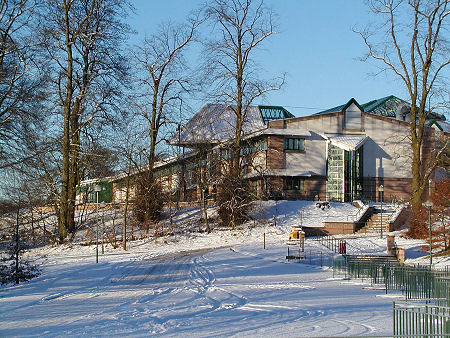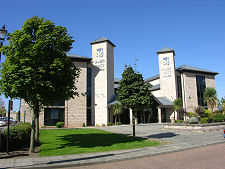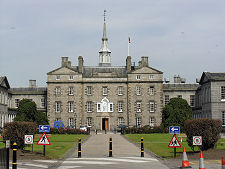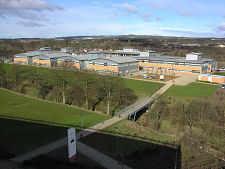 St Margaret's Academy, Livingston |
Scotland has an education system which differs significantly from its counterparts elsewhere in the United Kingdom. The differences are much more far reaching than you might expect, encompassing everything from the historical framework, the ages at which different stages in the process are reached, the degree of specialisation undertaken, and even the length of a first degree course. And if you are a visitor to Scotland, perhaps the most important single piece of information you need to know, especially if you are from England, is that the Summer holidays north of the border typically start and end some two weeks before they do in England: extending from the end of June to mid-August.
State involvement in education in Scotland began with the 1496 Education Act, which introduced compulsory education for the eldest sons of nobles. But it was the 1696 Education Act which was truly innovative, providing for a school and a schoolmaster in every parish in Scotland. Many believe this was only the second nationwide system of school education introduced anywhere in the world: and the first since the days of ancient Sparta. The Education (Scotland) Act of 1872 made education compulsory as well as universal.
In passing, it is worth highlighting a distinction that exists in both the Scottish and English education systems which visitors from abroad, and in particular from the United States, can find very confusing. In both England and Scotland school education is freely available for all children, in the state sector. These state schools are paid for by local councils, with additional funding (and influence) from the Westminster Government in England and the Scottish Government north of the border.
Additionally, and this is the part that can cause confusion, Scotland and England also both have networks of public schools, also known as independent schools. Public schools in Scotland and England are the exact opposite of public schools in the United States: they are fee-paying schools to which parents (at least those who can afford it) can opt to send their children. US public schools are the equivalent of state schools in Scotland and England.
After a nursery education that can start as soon as they have passed their third birthday, children in Scotland start primary school between the ages of 4½ and 5½, depending on their date of birth. It is normal for all children born between the start of March in a particular year and the end of February in the following year to be members of the same year group, starting school at the start of a new school year in the middle of August.
Children stay in primary school for seven years, known as years Primary One to Primary Seven: this means that most Scottish children remain at primary school for a year longer than their English counterparts, and consequently they spend a year less at secondary school, which they move on to in a year group between the ages of 11½ and 12½. Here they remain for a minimum of four years, from Secondary One to Secondary Four (at which point those who have reached the age of 16 can legally leave secondary school) and a maximum of six years by continuing on to Secondary Five and Six.
Pupils usually sit their "Standard Grade" exams towards the end of Secondary Four (though occasionally the year before). A "full set" of Standard Grades is considered to be eight, including English and maths, a foreign language, a science subject and a social subject. This illustrates another important differences between the education system in Scotland on the one hand and those in the rest of the UK on the other. The emphasis in Scotland is very much on the breadth of an education rather than on early specialisation.
The same principle applies when pupils go on to sit their next round of exams. The more academically able will go on to take up to five Higher Grade exams towards the end of Secondary Five, while a wider range of abilities is catered for with intermediate and access level courses which build on Standard Grades. In principle it is therefore possible for pupils to move on to one of Scotland's universities at the end of Secondary Five, i.e. at between 16½ and 17½ years old. In practice it is more usual for those destined for university to stay on at school into Secondary Six to sit a further round of Higher Grade exams in additional subjects, or Advanced Higher Level exams in subjects they have already passed at Higher Level: or, of course, to take a second shot at any Highers they failed in Secondary Five. A further option for many is attendance at one of Scotland's Further Education Colleges.
The differences between the Scottish and English systems continue at university level. One important difference is that north of the border the normal length of a first degree is four years. Another is that, since devolution the Scottish Government has abolished tuition fees for Scottish students attending Scottish universities.
There is one further feature of the Scottish education system which sets it apart. Although most state schools are non-denominational, there is a legal requirement for local authorities to provide Roman Catholic schools for those (mostly but not exclusively) Roman Catholic parents who wish to send their children to a school which is subject to an element of control by the Roman Catholic Church.




